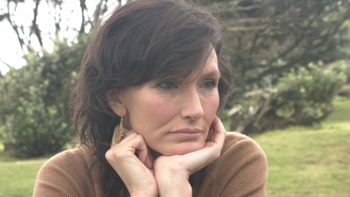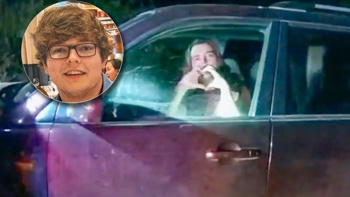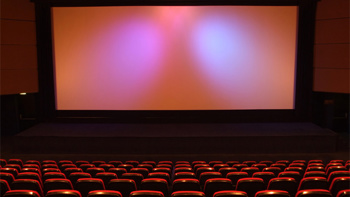The Government’s pick for an alternative Waitemata Harbour crossing will include two three-lane tunnels for vehicles and a 21km light rail tunnel between Albany and the CBD - a plan that will take decades to finish and cost tens of billions of dollars.
Prime Minister Chris Hipkins and Transport Minister David Parker released the chosen option in Auckland today after Waka Kotahi consulted on five options for another crossing which were a mix of bridges and tunnels.
Hipkins said he was “ambitious for Auckland” even after a lot of negativity he’d witnessed with respect to another Harbour crossing.
He referenced the weather events that often limited use of the current Harbour Bridge, and how it would require maintenance which would mean further closures.
“There is no question that additional connectivity across the harbour is required,” he said.
He didn’t rule out using a toll to pay for some of the project, saying the current Harbour Bridge was formerly tolled.
“All options in how we fund this are still on the table,” Hipkins said when asked whether public-private partnerships or further borrowing could be used to fund the project.
The Herald on Sunday revealed it has agreed to the most ambitious of those: two three-lane tunnels (one in each direction) for cars and trucks in between the central Auckland motorway junction and Akoranga on the North Shore. The tunnels would be 5-6km long, at least twice as long as the Waterview Tunnel. The goal is to start construction by 2029.
A 21km light rail tunnel would stretch from Albany to the Wynyard Quarter, passing through Takapuna and Belmont. It would be a separate project from the two roading tunnels, and be built in stages after at least the first of the road tunnels was completed.
/cloudfront-ap-southeast-2.images.arcpublishing.com/nzme/5G22ZQHFNRE3ZFW4J3TAZY6SJE.jpg)
Plans for a new harbour crossing.
As the tunnels were built, the use of the existing Harbour Bridge would change: two lanes would be turned into dedicated bus lanes to extend the Northern Busway to the CBD, and some clip-on lanes would become cycling and walkways. Waka Kotahi was also looking into building an elevated walkway above the cycle lanes to separate pedestrians.
The remaining four lanes would be for general traffic.
Steps would also be taken to rebuild SH1 north of the bridge to raise it up and reduce the risk of flooding.
The indicative costings for the full plan total $35 billion to $44.5 billion, but the tunnels would be built in stages to spread it out. The Government had asked Waka Kotahi to look at funding options and said it was open to considering different options.
The roughly $35-45 billion price tag would be paid for over many years in keeping with other significant roading projects, Hipkins said.
More detailed work on how it can be delivered will be done between now and Christmas. Cabinet would consider it early next year.
“It’s time to stop that talk that’s ground progress to a halt.
“The recent wind-related bridge closures of the Harbour Bridge, and the increasing frequency of flooding on the approaches north of the bridge, illustrate the city’s vulnerability to interruptions. These new tunnels future-proof the city’s transport network by reducing reliance on the Harbour Bridge while creating fast new options for getting in and out of the city.”
Transport Minister David Parker said a programme of this scale can’t be delivered immediately, it needs to be done in steps.
It will provide a much greater range of reliable transport choices, whether they’re in private vehicles, trucks or public transport, Parker said.
It extends the Northern Busway right into the CBD and it will connect with the light rail project.
“In my opinion, one of the problems in Auckland transport has been too much uncertainty,” Parker said
Much of the needed land is already owned by the Crown, he said.
The Albany region is suspected to be among the areas that will see the most population growth. It was expected in the next 10-15 years the Harbour Bridge would “grind to a halt”, Parker said, pointing to the need for more crossing capacity.
Construction on the road tunnels was expected to start by 2029 and Waka Kotahi was considering whether to build them one by one or both at once.
However, details are still tentative on how much it would cost and how it would be paid for.
Waka Kotahi’s indicative costings total $35 to $44.5 billion. Of that, the two road tunnels are expected to cost $12-15b and the light rail tunnel would cost up to $11 billion from Takapuna to the CBD, and up to $16 bill from Takapuna to Albany.
Parker said the government was open to considering different funding options, including congestion charges and value capture (a targeted levy on landowners or developers whose property values were boosted by proximity to the project). Waka Kotahi would report back to Cabinet next year on both the funding and phasing.
Parker said it was the most ambitious of the options Waka Kotahi consulted on, but could be done in parts.
The proposed routes would also leave options open for the wider Auckland roading and public transport networks, including links to the north west and along the proposed light rail route to the airport. It would deliver benefits, whether or not those programmes went ahead.
He has also hinted that the North-Western busway would get the go-ahead when the government sets out its Government Policy Statement for transport in the near future, describing it as “much-needed.”
/cloudfront-ap-southeast-2.images.arcpublishing.com/nzme/4US3ER76XVFHHEB6G7OMVTQX5U.jpg)
Harbour Bridge lane closures and speed restrictions because of high winds. Photo / Michael Craig
Parker said it was critical to move to secure the land that would be needed which was not already owned by the Crown to allow certainty. The upcoming draft Government Policy Statement would prioritise and fund that.
“All harbour crossing options land in the same area south of the bridge, near to Victoria Park. This is the anchor point for everything.
“It is clear to me that the critical connections between the new tunnels, the Auckland Harbour Bridge, SH1 (south and north), SH16 (to the port and to the west), the City Rail Link, the Northern Busway, the much needed North Western busway, and any light rail options should be secured now.”
While there is fairly broad political consensus on the need for another crossing, the outcome of the October election could affect the final plan.
Asked about the need for cross-party buy-in, Hipkins said he hoped the work done by Waka Kotahi should be enough to show other parties that this was the right option for a second crossing but if parties didn’t agree, Hipkins said they needed to be transparent about that.
National has called for a second harbour crossing and in its recent transport policy announcement said the chosen option should at a minimum provide more roading connections between the North Shore and the CBD: not just a rail-only option.
Its 2020 policy was for a road and rail tunnel option.
However, the Green Party are likely to be unhappy about the government’s decision: it had called for a rail-only option and priority on public transport rather than private cars.
National is keen on private sector funding for transport, such as equity financing through the Super Fund, KiwiSaver funds or global investors, and value capture mechanisms, such as targeted levies on developers and landowners who get “windfall gains” from the projects in land value increases.
Waka Kotahi’s list of the benefits of the project include a 275 percent increase in daily trips on public transport (bus and light rail) by 2051 (from 35,000 to 131,500 by 2051) and 6,400 people walking or cycling over each day. Light rail would cut 5 minutes off a trip from Takapuna into the CBD, and seven minutes off from Albany.
The number of vehicles using the existing Harbour Bridge would decrease by 64 percent (light vehicles) and 57 percent (heavy commercial vehicles), and CO2 emissions from exhausts would drop by 2,129,262 annual tonnes (a 36.3 percent reduction from 2018 levels) across the Auckland fleet.
Take your Radio, Podcasts and Music with you









